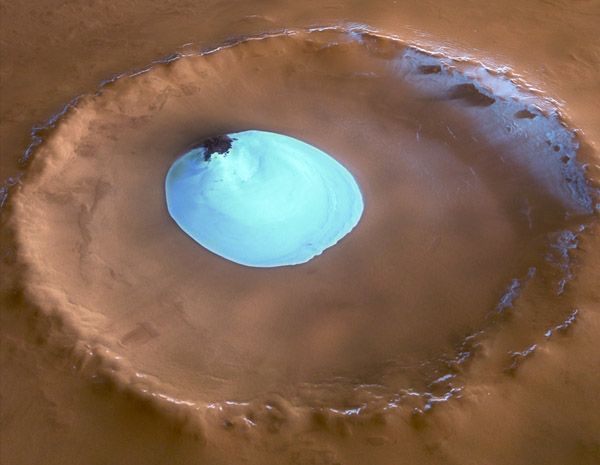
Scientists have confirmed that liquid water flows on Mars. New research suggests the dark streaks that seasonally appear and fade away on the surface of Mars are caused by running, salty water.
"It took multiple spacecrafts over several years to solve this mystery, and now we know there is liquid water on the surface of this cold, desert planet,” Michael Meyer, lead scientist for NASA’s Mars Exploration Program, said in a press release.
Scientists have long assumed that Mars holds water, based on things like photographs of river flows on the planet and data from rovers, but we've lacked any direct evidence until now. The new research was published today, September 28, in the journal Nature Geoscience.
The dark streaks, some of which reach over 100 meters long, were first noticed in 2010. They're called recurring slope lineae (RSL) and they only appear on slopes near the planet's equator during warm weather, and then fade away when temperatures drop. Now new images and data from the Mars Reconnaissance Orbiter show the streaks contain hydrated salts. Scientists already know these salts precipitate out of liquid water.
The data and images don't show the actual liquid water, but the streaks of salt wouldn't be there without some recent influx of water, Mary Beth Wilhelm of NASA's Ames Research Center, said during a press conference.
Mars is extremely cold: the average temperature is about minus 67 degrees Fahrenheit — but these salts are capable of lowering the freezing point of water enough to where liquid water could flow during Mars' warm season.
"The hydrated salts would lower the freezing point of a liquid brine, just as salt on roads here on Earth causes ice and snow to melt more rapidly," according to the NASA press release.
The paper doesn't speculate as to where the water is coming from though. The next step to figuring that out is to survey more of these streaks at the same high resolution, former NASA astronaut John Grunsfeld said during the press conference.
Some scientists suspect it's likely that microbial life exists under the surface of Mars, and this discovery is more support for that hypothesis. "We haven't been able to say whether life exists beyond the Earth, but following the water is a critical element of that," NASA's director of planetary science Jim Green said during the press conference.
Now at least we know the right spots to search for signs of life on Mars, he added. That said, these salty streaks only appear on very steep slopes and rocky terrain, so it will be difficult to investigate them up close.
NASA would need to create a specially designed rover capable of navigating the terrain, Grunsfeld said. There's also concerns about possibly contaminating the Martian water with Earth microbes if we sent a rover to collect samples.
We will send humans to Mars in the near future, and this is more evidence that the resources for humans to eventually live on the surface are already there, Grunsfeld said during the press conference.
"It seems that the more we study Mars, the more we learn how life could be supported and where there are resources to support life in the future," Meyer said in the press release.
Ask us about our FREE financial advice program: ![]()
Other Top Stories:
Technical Analysis Lesson 1 - Introduction
How I Made Over $30,000 a Year by Investing in Binary Options
Follow us and SHARE this story on Facebook: ![]()